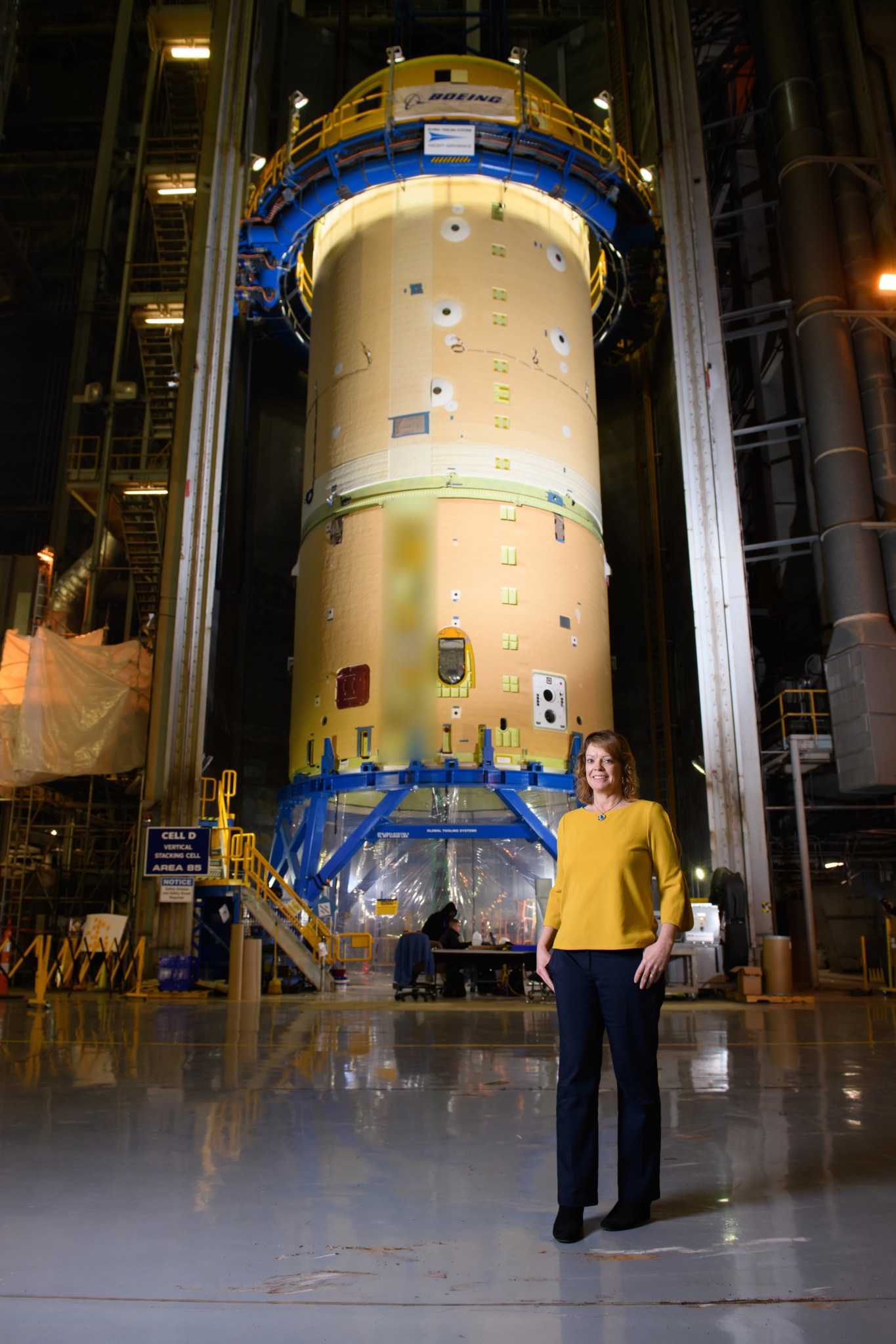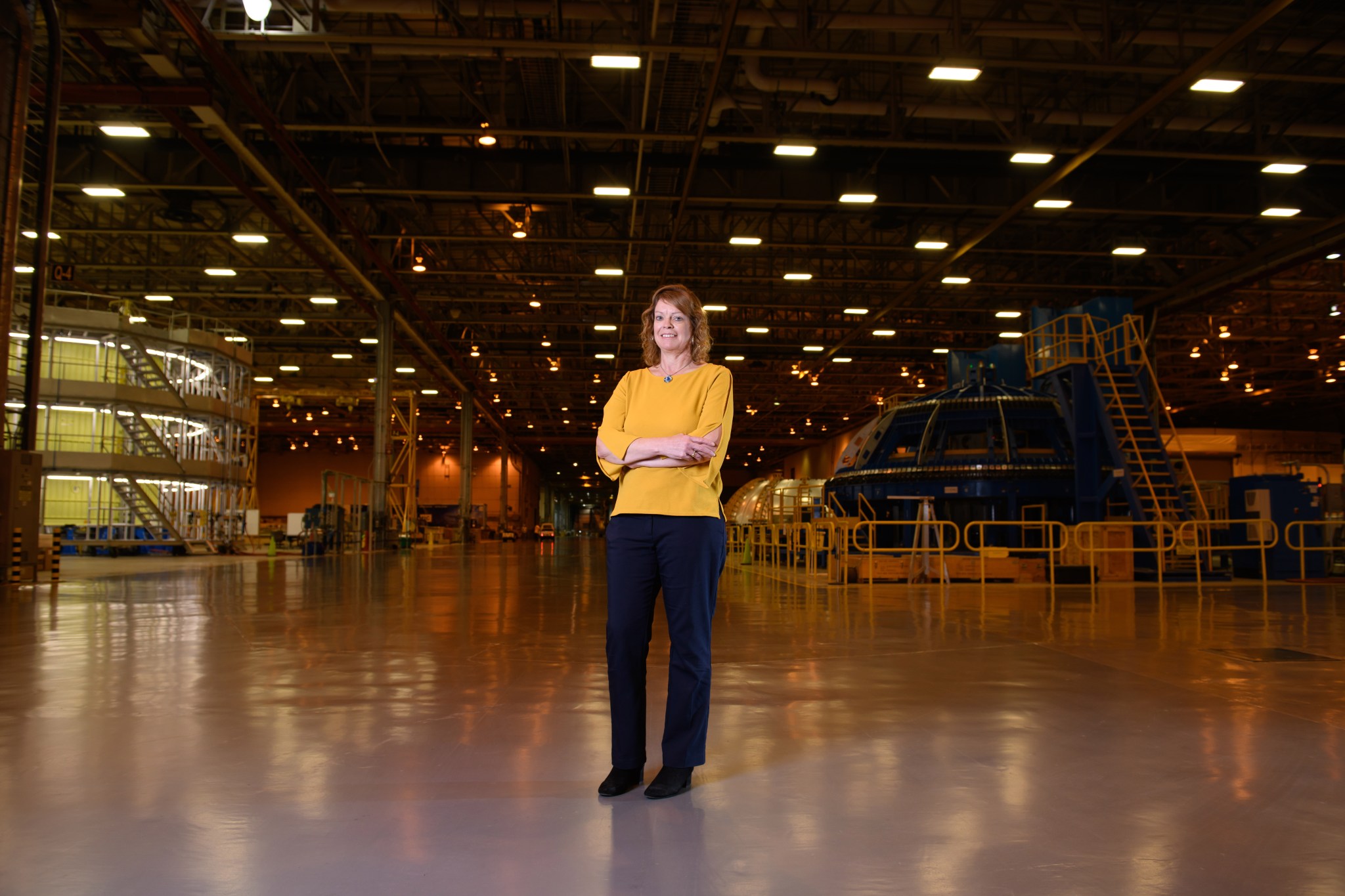Milking cows and baling hay might have more to do with rocket science than you think.
Growing up on a working dairy farm in rural Breese, Illinois, NASA engineer Julie Bassler watched planes fly overhead as she worked in the fields.
“As a child, the closest I ever got to seeing big cities was watching the airplanes that flew over our farm headed to their destinations,” Bassler said. “I would think, ‘I want to do that,’ and so my first dream was to be an airline pilot.”

When Bassler left the farm for college, she took her work ethic that she learned from her parents with her. After two years studying engineering at Eastern Illinois University in Charleston, Bassler focused on aerospace engineering at Parks College of Engineering, Aviation and Technology in St. Louis, Missouri, where she earned a bachelor’s degree in Aerospace Engineering in 1988. She went on to earn a master’s degree in physical science-space science from the University of Houston in Texas in 1992.
“I remember sitting at my house in between classes the day the space shuttle Challenger accident happened. Watching the news coverage that day made a huge impact on me. I knew I wanted to be part of the team at NASA to get back to flight,” Bassler said.
Today, as the manager of the stages office for NASA’s Space Launch System (SLS) rocket, Bassler has surpassed her wildest dreams. She and her team are responsible for all facets of the SLS core stage, the world’s largest rocket stage being built today, and Exploration Upper Stage, the advanced rocket stage that will make it possible to send even larger cargos to the Moon, Mars and even farther from Earth.

Bassler relates a lot of the work she does at NASA with the work she did on her family’s farm.
“It takes a team to get everything done on a farm. When someone needs help, you jump in to plow the field for them or let them borrow the equipment they need to do it. We all work together until the job is done. We work hard, but we play hard, too. We celebrate when it rains because that means the crops will grow and we get to relax and enjoy the day,” she said.
When it comes to building America’s most powerful rocket, team members help each other out and don’t stop until the job is done. Moments of celebration and relaxation are necessary, too. Bassler said she leaves room in her schedule to talk to her team and to allow them to “speak their truths.”
“Everyone here knows they’re not in this alone,” she said. “We are all part of the NASA family and the work is hard, but it is worth the end goal.”
There’s more to building a rocket than manufacturing the flight hardware, and Bassler’s team oversees the refurbishing and activation of test stands, ground support systems and transportation equipment for the rocket’s structural test articles. Bassler and her team at NASA’s Marshall Space Flight Center in Huntsville, Alabama, also work with teams across the nation to test and build the rocket. The core stage is being built at the agency’s Michoud Assembly Facility in New Orleans and will be shipped to the Stennis Space Center near Bay St Louis, Mississippi for a first time integrated hot fire test, called green run. After this major test, the core stage will be shipped and launched from NASA’s Kennedy Space Center in Florida.
When completed, the SLS rocket will send the Orion spacecraft beyond the Moon, about 280,000 miles from Earth. This is farther from Earth than any spacecraft built for humans has ever traveled.
Bassler’s personal experience spans the areas of human spaceflight, robotic missions, science payloads and technology development. Her career has prepared her for the everyday decisions she makes for SLS. She has received numerous honors and awards, including the NASA Outstanding Leadership Medal, Exceptional Achievement Medal, Space Flight Awareness Award, Silver Achievement Medal, and multiple special service and group achievement awards.
She and her husband Brad have four children and live in New Market, Alabama. Her brother runs her family’s farm in Breese.
Now, as Bassler looks overhead at the planes flying over her New Market home, she says to herself, “We will fly higher than even those big-city planes in the sky.”
For more information on SLS, visit:

























